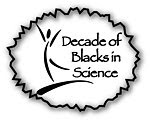Okay, think of the most populated city in the United States. What images come to mide? Lots of tall skyscrapers. Millions of people huddled and massed, walking down busy side walks? Lots of cars and trucks honking and blaring 24 hours a day? Hardly sounds like a place jumping with authentic wildlife, does it?
But it is! In fact, the Guidebook to NYC Nature is jammed pack with lots of amazing creatures and natural sites to see and observe. Most of the entries live in parks -- yes, a nother reason why urban parks are SO GREAT. Think of them as little wildlife nature refuges or preserves. And you can go on a Safari anytime -- for free.
What an exciting Urban Science Adventure. Go explore your urban nature preserve, too.
Monday, December 31, 2007
Urban Ecology and wildlife watching in the Big Apple
Sunday, December 30, 2007
Urban Forestry
Think about your last visit to your neighborhood park. Did you notice the green grass and tall trees? Well, depending on where you live, your park may include many trees scattered across the landscape. Here in the Midwest, tree lined entrances are common and several trees all along the landscape. Unlike the woods or forest, trees in an urban park are often more spread apart from each other with a nicely cared-for lawn. In woods, the trees and saplings are often close together and in the summer time the leaves shade the ground. Typically, grass does not grow in the woods. But urban parks are still very nice places - for people and wildlife.
Though most people don't think about it, cities (like those in the Midwest) were built in the middle of the forest. Buildings were put up and many trees were removed. But from the sky, many cities are really fragmented forests - a patch of trees here, a patch there, and most connected by a few lines of tree-lined streets. Your neighborhood IS a forest -- an Urban Forest.
And like any ecosystem, the habitat will attract certain types of wildlife. Depending on your geographic location, you like have wild neighbors that include raccoons, opossums, squirrels, birds such as robins, mocking birds, crows, starlings, pigeons, cardinals, finches, sparrows, woodpeckers, and doves, insects such as bees, butterflies, beetles, grasshoppers, and dragonflies, plus lizards, toads, and frogs. This is a forest ecosystem, but modified because of human occupation. But think about it, we can and do live with the wild creatures and some species are actually very good at living near human populations.
There are things you an do to learn more about the "Forest Where You Live" and help the forest, the wildlife, and the people enjoy it better.
So go on outside and take inventory of your local forest.
Wednesday, December 26, 2007
Urban Wildlife and Human Interactions
Monday, December 24 2007 USA Today reports:
Anchorage, Alaska - The Army restricted recreational activities at Fort Richardson because of recent wolf attacks on dogs. All training areas west and north of the Artillery Road area are off limits. Three women running with dogs encountered at least seven wolves. A dog on a chain was killed a few miles away. Two other dogs were killed in the area in the past month.
Comment: This are sad and regretable incidents. Wolves are ecologically important creatures. As top predators they serve an important role by keeping populations of deer, moose, and caribou in check. Alaska is a very open and compared to the lower 48 states, is less densely populated. I have a friend and colleague who teaches for the University of Alaska and she says there are parts of Alaska so untouched that some wild animals still haven't really suffered from human interactions. But I do commend the military administrators for taking action. Restricting opportunities for humans (and their companion animals) to interact with wildlife (and I emphasize WILD) is one of the best solutions. Typically, wildlife managers do their very best to avoid a solution that results in removing the problem animals. And by removing I mean relocation or death. And wolf hunting in Alaska is a real and legal activity. I'm not anti-hunting, but I don't like the idea of hunting top predators. I'm biased, I'll admit it. On a final note, I do extend my sympathies to the families of the pet dogs who were killed by wolves. I don't doubt that these animals were trying to protect their families from their wild cousins.
Hartford, Conneticut - Bird lovers are battling over the fate of mute swans in the state. The Connecticut Audubon Society wants the state to remove the swans from critical marine habitats, claiming the graceful birds are invaders that cause environmental harm. But the swans are protected in Connecticut, and defenders say any move against the birds is unacceptable.
Comment: This is hard one because it is two important ecological issues that are in conflict with one another. In this situation ecologists are concerned for 2 important matters. Issue 1: Protect at-risk habitats so that the plant and wildlife that call that place home can establish or keep its balance. Issue 2: There are laws that protect some wildlife species. In this case it is the mute swan. Like many other waterfowl there are laws (federal and state) that make it absolutely unacceptable to mess with an animal almost any circumstance. But the problem is the mute swan is an unwanted animal in this at-risk habitat. The mute swan is actually the problem - in this case. Sometimes (and I hope things work out), exceptions can and have been made. There are cases where wildlife officers will demonstrate that they can safely remove animals and certain times of year so that the habitat can be restored and the birds are not harmed. And since the Audobon Society is a well-respected organization and usually does this in the most proper and scientific and legal way, I feel sure they will work toward a feasible solution to deal with both issues
Tuesday, December 25, 2007
What my name means
Okay, I attended a workshop: Certified Interpretive Guide Training. It is training presented by the National Association for Interpreters. The Association and the training is designed for anyone interested in enhancing their skills to present natural resources or heritage programs for the public. In other words for people who present at museums or national parks or tour guides or even historical re-enactors. I'm interested in environment and natural resources.
Anyway, one of the training program's exercises was to come up with an acronym for your name. I couldn't. But now I have.
DNLEE: Demystifying nature, letting everyone experience.
It's a start.
Sunday, December 23, 2007
More on whale ancestry
Here's more coverage about whale ancestors. It's also a quick reader. Content-wise it's better for college students and advanced high school curriculum. This one was posted on the National Science Foundation's News Line. here. The story appears in Nature.
Happy supplemental reading.
DNLee
Thursday, December 20, 2007
Fox-sized deer is whale's closet relative
 Credit and Larger Version
Credit and Larger VersionOkay, I had to share this reader as well. Online (and perhaps print, too) Scientific American announces that the world's largest mammal - the whale - is most closely related to a . No kidding. Check out the quick read here.
Share with others. Perfect for middle & high schoolers - interestning reads OR for college students studying evolution, taxonomy, cladistics, or systematics.

photo credit: upload.wikimedia.org
Wednesday, December 19, 2007
Nucleus is for Us

I recommend the summary for all science educators (high school and college) to share with students. This is a perfect * short * co-curriculum article. And for the college students, the links to the other articles are perfect ways to introduce them to primary literature and encourage them to test out how well they comprehend some key cellular biology vocabulary.
Tuesday, December 04, 2007
Social Learning and Promoting Sustainability
I'm sharing information I have come across on ECOLOG - an online ecology listserve.
Dear colleagues,
The policies being used to address ecological issues around the concept ofsustainability increasingly demonstrate how their impact goes beyond theenvironment to influence things such as public health, jobs, workingconditions, and incomes. This means a more multi-stakeholder approach isrequired to the negotiation and implementation of environmental policieswithin and across sectors, and at local, regional, national andinternational levels. Inevitably, the reality is that whatever aims arefinally chosen, implementing the solutions to reach them will involve a longprocess of difficult dealings with a great variety of individuals, groups,and institutions who can make them fail or succeed.
The Learning for Sustainability site - http://learningforsustainability.net- has been substantially revised and updated over the past few months as aguide to on-line resources for government agency staff, NGOs and othercommunity leaders working to support social learning and collective actionaround the environment and sustainability. A central section of this sitelinks the reader to a range of guides, tools and checklists that can bedrawn upon for guidance in this area to address issues such as participationand engagement. Other pages here highlight the lessons that have emergedfrom researchers and practitioners in different sectors. These includelessons from the HIV/AIDS sector, public health, and protected naturalareas. They are shown on their different pages to highlight the fact thateach sector is looking at similar human dimensions practice change lessons,and that the more we can learn across sectors the better. A new page in thissection now covers tools, tips and techniques for facilitators and othersocial engagement specialists.
Other pages provide links to best and emerging practice in social learningareas including networking, dialogue, adaptive management, and knowledgemanagement. Evaluation is given its own section which covers key topics suchas participation, empowerment, logic models and scale. A research methodsand approaches section has links to action research resources, material ondoing integrated and interdisciplinary research, a listing of on-linejournals in these areas, and it hosts the IntSci (Integrated Science forsustainability) discussion network. New pages link to resources onunderpinning social research methods including systems thinking and actionresearch. One page lists on-line resources for both post-graduate researchstudents and their supervisors. Topics include thinking about thesupervisory team, as well as tips for structuring and writing a thesis ordissertation.The The Learning for Sustainability site -http://learningforsustainability.net - also manages additional pages onfinding volunteering and job opportunities in the environment andsustainability sectors. These are directly accessible from the main siteindexing system. As with the rest of the site these sections bring links tolot of on-line resources together in one easy to access site, each link isannotated to provide a guide to its contents.Please feel free to pass this posting on to colleagues and friends who maybe interested in this content.
Regards,
Dr. Will Allen





















